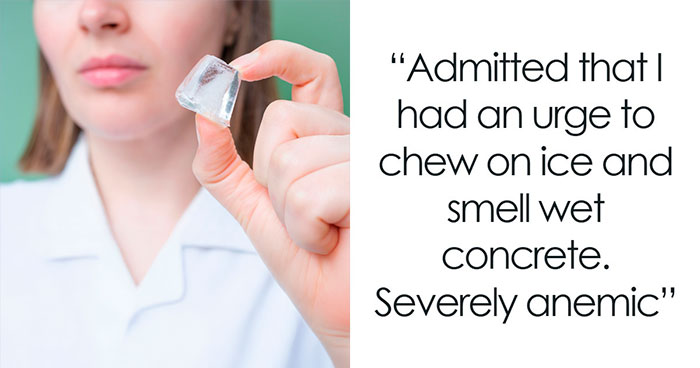
82 Best Wildlife Photos Of 2017 Were Just Announced And The Winning Pic Is Making Everyone Angry And Sad
A ceremony at the Natural History Museum, London, has revealed the results of the Wildlife Photographer of the Year contest, and the winning photos are worth all of the attention they can get. This year, the annual competition has attracted nearly 50,000 entries from 92 countries and the organizers were kind enough to share them.
Photojournalist Brent Stirton has won the Grand Title for his picture of a black rhino's mutilated body. According to judge Roz Kidman Cox, his image was "symbolic of one of the most wasteful, cruel and unnecessary environmental crimes, one that needs to provoke the greatest public outcry." The shot was also included in Stirton's entry to the World Press Photo 2017 Nature category where his story won the first prize as well.
The powerful photo will go on show alongside 99 others at the Wildlife Photographer of the Year exhibition which opens on Friday October 20 at the central London museum.
More info: nhm.ac.uk
This post may include affiliate links.
'Arctic Treasure' By Sergey Gorshkov, Russia, Animal Portraits Finalist
Enchanted by its rugged beauty, Sergey finds any excuse to return to Wrangel Island. With no supplies available, he has to bring everything by helicopter – this two month trip took a year to plan. Collaborating with researchers, Sergey worked from shelters at the edge of the snow goose colony to reduce his impact on the inhabitants of this frozen world.
In late May, a quarter of a million snow geese arrive on Wrangel Island – the world’s largest breeding colony. Opportunistic Arctic foxes take advantage of the feast, stealing eggs and caching them for leaner times. But the geese and foxes are well matched – it would have taken luck and cunning to win this prize.
I LOVE that this color photo is black & white except for the eyes! Something only nature can do.
'Children Of The Rainforest' By Charlie Hamilton James, UK, The Wildlife Photojournalist Award: Single Image Finalist
Charlie was working in the remote Machiguenga community of Yomibato when he came across Yoina and her pet tamarin. Every day, she would go for a swim taking her tamarin with her. ‘I have no idea why,’ says Charlie. ‘The tamarin hated it and spent the whole time clambering onto her head to escape the water.’
Yoina’s tribe have inhabited the protected rainforest of Yomibato for generations and have earned the right to hunt animals (without guns) for food. The tribe consider themselves part of nature and take just enough to ensure their and the forest’s survival. When monkeys carrying young are killed, the babies are often kept as pets and later released.
'Snow Spat' By Erlend Haarberg, Norway, Black And White Finalist
As spring awakens in the upland birch forest of Vauldalen, tensions between mountain hares grow. One night, two hares came to blows in front of Erlend’s hide, squabbling over food he had left out to attract them. Snowflakes flying, Erlend froze the action, later converting the image to black and white to accentuate the drama of the moment.
As their Latin name, Lepus timidus, suggests, mountain hares are timid creatures, cautious after a lifetime of being hunted by predators and for human sport. In spring they become more active and, under the cover of darkness, scrap over food and females.
'Bear Hug' By Ashleigh Scully, USA, 11–14 Years Old Finalist
Ashleigh went to Alaska intent on photographing brown bears as families. This was the moment she had been waiting for, a mother leading two cubs across the beach. One of them wanted to stay and play. ‘I fell in love with brown bears on this trip,’ says Ashleigh. ‘They are so similar to humans.’
Brown bears are usually solitary, but there is a strong bond between mother and cubs. The young bears stay with their mother for two to three years, learning what to eat, and how to look after themselves. Large numbers of bears follow the plentiful food supplies available here in summer, feasting like this family, on clams, salmon and berries.
this photo is true capture of mother and child in the wild... excuse the pun, but I can hardly bear it.
'Stuck In' By Ashleigh Scully, USA, 11–14 Years Old Winner
Ashleigh was looking for red foxes in the deep snow of winter, having photographed them in spring and summer from a hide near her home. Spotting this female hunting from the back seat of a car, she grabbed her camera, rested it on the window frame and shot a series of the fox ‘mousing’, diving nose first into a drift.
Hunting foxes step quietly across the surface of the snow then stop, tilt their head and listen intently. Suddenly they will pounce, leaping high enough to punch through the deep snow. Sometimes they remain in this upside-down position for several seconds. More often than not these hunts are successful. The vole this fox was after was lucky this time.
'Toad With Attitude' By Jaime Culebras, Spain, Animal Portraits Finalist
The moon shone bright over the Tiputini River, making it easy for Jaime to find his way as he searched for nocturnal wildlife. A huge smooth-sided toad was clambering and hopping along the river bank. Eventually the toad paused to rest, and Jaime noticed its belly, speckled with white spots ‘like stars in the sky’.
Yasuní National Park is one of the most biodiverse regions on Earth, with 150 different species of amphibians alone. Smooth-sided toads can look after themselves, actively squirting a toxin from glands around their shoulders. Their paradise, however, is increasingly under threat – new oil reserves have recently been found below the surface.
'Memorial To A Species' By Brent Stirton, South Africa, Wildlife Photographer Of The Year Grand Title Winner
Taken as part of an undercover investigation into the illegal trade in rhino horn, Brent’s winning image tells the evocative story of one of the trade’s latest victims – a black rhino bull from South Africa’s Hluhluwe Imfolozi Park. The poachers responsible are thought to have come from a local community, working to order. After entering the reserve illegally, they ambushed the rhino at a waterhole, shooting it dead before fleeing from its mutilated body.
Brent’s poignant image is symbolic of the devastating impact of the demand for rhino horn. Black rhinos were once the most numerous of the rhino species. However, it was estimated in 2015 that only 5,000 remained in the wild – a number that conservationists believe to have fallen since due to increased poaching. These critically endangered animals will become extinct unless effective and compelling action is taken.
‘When an image shocks and assaults us, there needs to be good reason. With this one, there is. The stark simplicity forces us to witness the brutal, tragic, stupid waste of a poacher’s work. If we feel disgust it is at our own species, while we pity the black bull rhino for its ghastly death, killed by two shots just so that its horn could be hacked off to supply illegal trade in a questionable “medicine”. There is a horrible intimacy to the photograph: it draws us in and invites us to explore our response and responsibility.’
Lewis Blackwell, Chair of the jury
I'm glad this won, it is a powerful and thought provoking image. This is a portrait of humans as much as rhinos-the ugliness is all us.
'Saved By Compassion' By Adrian Steirn, Australia, The Wildlife Photojournalist Award: Single Image Finalist
This pangolin’s minder was cautious about Adrian’s presence. His charge was shy and it had taken him many moments of patience and round-the-clock care to gain its trust. Respecting this bond and the pangolin’s rehabilitation, Adrian worked carefully to create this intimate and compelling portrait.
Recovering after its confiscation from poachers, this pangolin is one of the lucky ones. In spite of a global ban on their trade, pangolins continue to be the most trafficked mammal in the world, sold for their meat and scales. As with any conservation story, the situation is highly complex, with embedded cultural beliefs fuelling the black market.
'Sewage Surfer' By Justin Hofman, USA, The Wildlife Photojournalist Award: Single Image Finalist
Justin watched, delighted as the seahorse bounced from one piece of natural debris to the next. However, as rubbish and sewage began to sluice the shore, the creature seized upon this cotton bud as a stable anchor. Justin’s admiration for the beautiful seahorse soon turned to ‘vitriolic anger’ at the ‘incoming tide of pollution and litter’.
Because of their unusual equine shape, seahorses are poor swimmers. They propel themselves forward using their wing-like dorsal fins, with their smaller pectoral fins used for steering. It’s exhausting work, so they often catch a ride or take a break by clinging to sea grasses and corals with their prehensile tails.
'Handled With Care' By Robin Moore, UK, The Wildlife Photojournalist Award: Single Image Finalist
Just a few hours old, these wild Jamaican iguana hatchlings are some of the rarest lizards in the world. Robin’s endearing photograph was part of a campaign to save these creatures, whose future had been jeopardised by government plans to build in their forest habitat.
Thought to be extinct, these miraculous iguanas were rediscovered in 1990. Since then, their dramatic comeback has been spurred on by a programme that aims to collect young and vulnerable iguanas from wild nests, saving them from predators such as the Indian mongoose. After a few months in captivity the babies will be released back into the wild.
'Circle Of Life' By Jordi Chias Pujol, Spain, Under Water Finalist
The five-metre baitball was constantly changing shape and moving. The mackerel’s defence strategy seemed to be working, as for the hour Jordi followed them, freediving, no predators attacked. As the ball sank deeper, he captured a top-down perspective, highlighting the graceful choreography that belied the simmering tension.
By swimming in a tight, coordinated school, the slender mackerel confuse their predators, striped European barracudas and broader bluefish. Barracudas are skilful hunters of fish, as are the aggressive bluefish, which often attack shoals as well as hunting other animals such as squid.
'Winter Pause' By Mats Andersson, Sweden, Black And White Finalist
The red squirrel closed its eyes for just a moment – ‘as if in prayer’, thought Mats – then resumed its search for food. Mats had walked the forest every day, often stopping to watch the squirrels in this spruce tree. For him, the creature’s demeanour on this cold February morning encapsulated the spirit of winter.
Winter is a tough time for many animals. Some hibernate to escape its rigours, but not the red squirrel. It endures the cold mornings of winter foraging for seeds, nuts and insects. They favour woodland with coniferous trees – ensuring a year-round supply of seeds – and store food to help see them through lean times.
'The Night Raider' By Marcio Cabral, Brazil, Animals In Their Environment Winner
Marcio had been visiting the National Park for three years waiting for the right conditions to capture the glowing termite mounds. After days frustrated by rain, he was in for a surprise. A giant anteater ambled out of the darkness and stayed just long enough for Marcio to take a single picture, using a long exposure and flash to highlight his unexpected companion.
Termite mounds twinkle with the green lures of click beetle larvae, waiting for adult termites to fly into their traps. Giant anteaters, up to two metres long, have a more direct approach, using powerful claws and long tongues to reach inside the mound. But the termites aren’t defenceless – soldiers spray toxins at the intruder, which quickly make it move on.
'Wings Of Winter' By Imre Potyó, Hungary, Behaviour: Invertebrates Finalist
Hunting for moths with a torch, ‘I was soon covered in them’, says Imre. He used an in-camera double exposure, lighting the moth with multiple bursts from a stroboscopic flash and firing the shutter again with the focus on the stars. It took many attempts to create this image, revealing the moth’s night-time pursuits.
From late October to early January, clouds of male winter moths search for the scent of the wingless females. Each female can lay 350 eggs that hatch in spring to take advantage of the first flush of green leaves. This early rush of life is a feast for blue tits, which feed their young on the succulent green caterpillars.
'The Power Of The Matriarch' By David Lloyd, New Zealand/UK, Animal Portraits Finalist
The mellow light of dusk emphasised every wrinkle and hair as a herd of elephants approached David. The female leading the herd – possibly the matriarch – looked straight at him, her amber eye shining bright through the heavy folds of skin. Her gaze was full of respect and intelligence, the essence of sentience, he says.
The distinctive large ears of African bush elephants have extensive blood vessels and wrinkles to maximise heat loss. Losing part of the lower earlobe, like this female, is a common injury. Both males and females use their tusks for fighting, digging and feeding. Poaching for tusks for the ivory trade is still one of the biggest threats facing African elephants.
Magnificent animals but it breaks my heart what humans are doing to them.
'Resplendent Delivery' By Tyohar Kastiel, Israel, Behaviour: Birds Finalist
Tyohar watched every day for a week as a pair of resplendent quetzals delivered fruit and food to their two chicks. The birds’ erratic movements made them difficult to photograph, however Tyohar remained patient. This unique composition of a male quetzal in flight is a reminder, not only of Tyohar’s tenacity, but also of the bond he brokered with the winged family.
Unlike this pair, resplendent quetzals usually breed in thick rainforest, using their beaks to make nests in rotten trees. The couple then take turns to incubate their eggs inside the hollow. Often the only clue of their whereabouts is the male’s colourful tail peeking out from the tree hollow.
'A Magnificence Of Monarchs' By Jaime Rojo, Spain, Animals In Their Environment Finalist
Jaime had witnessed the spectacular gathering of monarch butterflies before, but this time he had a permit to remain until dusk. ‘I had to run uphill chasing the last light, all the trees around me trembling with butterflies,’ says Jaime. The finishing touch came as one butterfly opened its orange wings, the rest of the colony filling the frame.
Every autumn, millions of monarch butterflies migrate nearly 5,000 kilometres from their breeding grounds to overwinter in Mexico. The sacred fir forests drip with insects gathering together for protection. But this remarkable event is threatened by the use of herbicides across North America, illegal logging and an increased frequency of winter storms.
'The Insiders' By Qing Lin, China, Under Water Finalist
The tiny eyes of the parasitic isopods peered out at Qing through the fish’s mouths. It took six dives, immense patience and a pinch of luck, but finally all three fish revealed their guests. In that moment Qing captured the three curious individuals, all lined up, eyes front and mouths open.
These tenacious isopods probably entered the anemonefish via their gills, attaching themselves to their host’s tongue. Over time, these crustaceans (distantly related to woodlice) will stretch their legs out and suck the fish’s blood until the tongue withers and dies. Eventually, they will replace the entire tongue.
NOBODY read about the isopods? That is a (mind-blowing-good) horrific photo.
'Giant Gathering' By Tony Wu, USA, Behaviour: Mammals Winner
Dozens of sperm whales mingled noisily off the coast, stacked as far as Tony could see. Immediately, he realised that this was something special – like a gathering of clans, these whales were part of a multi-day congregation. For Tony, the sight filled him with hope that ‘the recovery of sperm whale populations may be going well’.
The marble-like appearance of these whales is a sign of skin-sloughing. Large aggregations like this one will rub and roll against each other to exfoliate their neighbour’s dead skin, helping them to maintain hydrodynamic performance. The tactile contact also helps to reinforce social bonds.
'Bold Eagle' By Klaus Nigge, Germany, Animal Portraits Finalist
After several days of constant rain the bald eagle was soaked to the skin. ‘As the eagle edged nearer, picking up scraps, I lowered my head, looking through the camera to avoid direct eye contact,’ says Klaus. His low perspective and simple composition concentrates the portrait on the eagle’s expression, enhanced by the overcast light.
Opportunists with a penchant for fish, bald eagles gather at Dutch Harbor to take advantage of the fishing industry’s leftovers. After dramatic declines in the twentieth century, the species has started to recover, but the birds are still poisoned by eating carrion containing toxic lead ammunition. A ban was recently overturned in the USA.
'Spring Release' By John Mullineux, South Africa, Behaviour: Mammals Finalist
John waited patiently, never taking his eyes off the animals at the waterhole. Drought had heightened tensions in Kruger National Park and if he was lucky, he would be able to capture a crocodile attack. Wish granted, the crocodile suddenly exploded out of the water attacking the impala in the briefest of moments.
With lightning speed, the impala elude the reptile’s jaws, using their incredible acrobatic skills to escape. When alarmed, these mammals have been known to leap up to three metres in the air and can travel nine metres in a single bound – perfect for escaping a hungry crocodile.
'Cold Catch' By Fred Zacek, Estonia, 10 Years And Under Finalist
Lying on his stomach on the river ice, Fred was watching carefully. It was the first time he had seen an otter. It kept diving and resurfacing with frogs, and each time it went back in Fred slid closer across the ice. ‘The sound of the otter’s sharp teeth chewing through a frog as if it was a sandwich was unforgettable,’ he says.
Frogs can form a significant part of an otter’s diet, especially in winter when hibernating individuals, like this moor frog, make for easy pickings. Otters will keep feeding holes open and ice-free through the cold weather – their dense, oily coats act as both insulation and waterproofing.
'Swim Gym' By Laurent Ballesta, France, Behaviour: Mammals Finalist
‘We were still a few metres from the surface, when I heard strange noises,’ explains Laurent. Curious, he approached slowly and was rewarded with the glorious sight of two Weddell seals – a mother and her newborn pup. ‘They looked so at ease, where I felt so inappropriate.’
Weddell seals give birth on ice and take their offspring for their first frosty swim a few weeks later. Eventually, the pups will grow up to be accomplished divers with excellent underwater vision. After familiarising themselves with their watery surroundings, adult seals can reach depths of 600 metres, staying submerged for up to 80 minutes.
Swim gym? More like swim dance floor, the fella on the right is obviously showing off his best moves
'Wolf Watch' By Lasse Kurkela, Finland, 11–14 Years Old Finalist
After an unsuccessful year looking for wolves, Lasse and his father heard of a group attracted by bait for bears and arrived at a remote hide in darkness. First light revealed movement in the trees as a wolf cautiously approached. Wrapping his camera in fabric to silence it, Lasse used black and white to best capture the dark, misty atmosphere.
Lone wolves have a bad reputation, but have a natural role in mixing the gene pool and expanding to new areas. Wary of people, Finland’s wolves are hunted, both legally and illegally. Bitter controversy continues about their numbers in the wild. Some argue culling is necessary to protect people and hunting dogs. Others call for conservation.
taking a life for some cheap thrill is so wrong. how can they legalize it?
'Lions’ Long Shot' By Michael Cohen, USA, Behaviour: Mammals Finalist
Peering through the rain, Michael spotted a captivating site, two lions hot on the hooves of a fully-grown male giraffe. Unable to remain detached, the scene connected with Michael. ‘Something draws me to life and death struggles in nature. It’s raw and emotional and a rare privilege to witness.’
This struggle is particularly unusual. Lions rarely attack giraffes as a single kick from their long, powerful legs could prove fatal. But as the hunt drew closer, Michael saw that this giraffe had misshapen hooves. This may have affected the giraffe’s ability to run, which could have attracted the lions’ attention.
'Sweet-Grass And Ripples' By Theo Bosboom, The Netherlands, Plants And Fungi Finalist
With his initial plans to photograph the forest scuppered by wind, Theo walked past the lake frustrated and discouraged. However, with his second glance at the water he began to appreciate the blustery conditions. ‘When I looked closer, I noticed the beautiful patterns created by the play of the wind, the waves and the grass,’ he says.
Typically found in marshes, river margins and around lake shores, the streaming forms of floating sweet-grass are easy to spot, especially in summer, when their half-metre tall flower spikes grow straight out of the water. A creeping perennial, it is likely that it plays an important role in the process that changes shallow open water into fringing grassland.
'Glimpse Of A Lynx' By Laura Albiac Vilas, Spain, 11–14 Years Old Finalist
Laura travelled to the Sierra de Andújar Nature Park with her family to follow her dream of seeing wild Iberian lynx. On their second day, a pair were relaxing just 15 metres from the road. Laura watched for an hour and half in total silence. ‘I felt huge respect to be so close to them and to observe them so peacefully,’ says Laura.
One of the world’s most endangered felines, the Iberian lynx is only found in two small populations in southern Spain. Unlike the larger European lynx, Iberian lynx feed almost entirely on rabbits and need open scrub to breed. Thanks to intensive conservation efforts, populations have recently started to recover, but continued action is still essential.
'Contemplation' By Peter Delaney, Ireland/South Africa, Animal Portraits Winner
Peter had spent a long, difficult morning tracking chimpanzees through dense undergrowth. ‘Photographing in a rainforest with dim light and splashes of sunlight means your exposure settings are forever changing,’ he says. Keeping his camera at its optimum ISO setting meant a slow shutter speed, so it was hard to keep a sharp focus without a tripod.
The troop of 250 chimpanzees had spent the morning high in the canopy. Totti, named after an Italian footballer, is a favourite with the rangers, but perhaps not the ladies. After trying everything to entice a female to join him on the ground – posturing, gesturing and calling seductively – he gave up and flopped onto the forest floor.
'A Whorl Of Sharks' By Esantosh Shanmuga, USA, Black And White Finalist
The sandbar sharks circled far below Santosh, slipping in and out of the dark like ghostly apparitions. Inherently cautious, only a few brave individuals rose to check him out. During those moments he felt ‘not terror, but admiration’, he says. ‘I was just a visitor in their watery ‘ohana (family) and they graciously let me stay.’
These sandbar sharks are all male and have probably come together to feed or spawn. A school of females may join them later in the season, but in the meantime, they must establish a hierarchy. Sizing each other up, the dominant sharks attempt to secure the better spots nearer the surface.
'Crab Surprise' By Justin Gilligan, Australia, Behaviour: Invertebrates Winner
Justin was busy documenting an artificial reef experiment when the army of crabs appeared, with an octopus acting ‘like an excited child in a candy store’, as it chose its final catch. The irony of this unexpected encounter isn’t lost on Justin: ‘An aggregation of crabs the size of a football field wandered through the experiment and we had no idea why.’
Moments like these reinforce how little we know about Australia’s temperate reefs, and ocean ecosystems generally. Spider crabs usually come together for protection while they moult or mate, but these groupings were previously unknown in this area. Crabs like these are common prey for the Maori octopus – the largest in Australian waters.
'Snap Shot' By Rodrigo Friscione Wyssmann, Mexico, Behaviour: Amphibians And Reptiles Finalist
As Rodrigo dived down, two crocodiles lunged at one another, less than a metre away. The fight lasted seconds, but it was a moment Rodrigo had dreamed of for years. Lying on the bottom, camera pre-set to shoot into the surface light, and strobes aimed downwards to minimise backscatter, he finally captured the fierce energy of a clash.
Though American crocodiles are well known for their territorial aggression, combats are rare – smaller crocodiles usually give way to larger ones. Both about three metres long, these two were evenly matched. They attacked each other’s eyes and throat, powered by strong limbs, sharp claws and muscular tails and wielding up to 30 pointed, conical teeth.
'Night Of The Turtles' By Ingo Arndt, Germany, Behaviour: Amphibians And Reptiles Finalist
Ingo was in Costa Rica for three weeks, but the conditions he needed – an arribada (a mass arrival of turtles) and enough light to capture the spectacle – only combined on one night. Tracing their paths with a four-second exposure in the dim blue of the night, he portrayed hundreds of turtles dragging themselves up the sand.
The greatest arribadas occur in the rainy season, often on the darkest nights, a few days before a new moon. Hundreds of thousands of female olive ridley turtles haul themselves up their natal beaches to dig nests in the sand and lay their eggs. A million eggs can be laid on the beaches of this reserve each year.
'Big Sucker, Little Sucker' By Alex Sher, USA, Under Water Finalist
'The tricky part for the remora, and me,’ says Alex, ‘was staying close enough without being sucked in.’ Alex swam with this whale shark for three hours, even after his camera ran out of battery. Keeping an eye on Alex, the gentle giant granted him this powerful close-up, the wide arch of its mouth set off by the timely curve of the remora.
The world’s largest fish, whale sharks are filter feeders, sustaining their huge size with plankton and small crustaceans, like krill. Remoras often associate with a larger host, using the modified fin on their heads like a suction cup to hitchhike. They get free transport, protection, and a tasty and steady supply of parasites from the larger sharks.
'Anticipation' By Marco Urso, Italy, Behaviour: Mammals Finalist
The anticipation of the brown bear cubs was palpable as their mother fished in Lake Kuril. As soon as she emerged grasping a plump sockeye salmon, they ran towards her, eager to claim their supper. As Marco took the photograph, the mother glanced towards him, her look of maternal protection clear to see.
The bright colour of this fish shows us that it is breeding season in Lake Kuril, which plays host to one of the largest salmon-spawning events in the world. These bears are mostly vegetarian, but they will take advantage of the well-stocked lake before moving on.
'Polar Pas De Deux' By Eilo Elvinger, Luxembourg, Black And White Winner
Driven by curiosity and hunger, this polar bear and her cub stopped to investigate the dirty puddle leaking from Eilo’s ship. Without hesitation and in synchrony, they quickly lowered their heads to taste the stained snow. Ashamed, Eilo framed her shot in black and white, emphasising the contrast between the pollution and the pristine environment.
Year on year, a variety of noxious substances are brought into these bears’ habitats. Due to their low degradation rates, the pollutants remain in the environment, gradually accumulating as they make their way through the food web. As apex predators, the bears are exposed to high levels of these pollutants, which endanger their health and reproduction.
'Realm Of The Condor' By Klaus Tamm, Germany, Animals In Their Environment Finalist
'Cat Attack' By Stefano Unterthiner, Italy, Urban Wildlife Finalist
Early one morning, Stefano was awoken by an unusual alarm, the calls of a worried pair of kestrels. Peering outside, he spotted the cause of the racket. A cat had crept perilously close to the couple’s nest and in retaliation, the protective mother was repeatedly mobbing the predator.
Matera is home to Europe’s largest breeding colony of lesser kestrels, who build their nests in the town’s historic stonework. Fond of their winged tourists, the town’s residents create nest boxes to protect the kestrels from curious cats and have even been known to hand-rear clumsy chicks that have fallen from their nests.
'In The Grip Of The Gulls' By Ekaterina Bee, Italy, 10 Years And Under Winner
Setting out to sea, Ekaterina and her parents were looking for white-tailed sea-eagles. But five-year-old Ekaterina was more interested in the cloud of herring gulls that surrounded the small boat, attracted by her bread. She snapped this image, engrossed in the noise, the wing beats and the colours of their feet and beaks among the whirl of white.
The impressive white-tailed sea-eagles of Nord-Trøndelag attract many visitors and photographers and so the more common herring gulls are not usually the focus. Often considered pests because of their gregarious nature and habit of stealing food, silver-backed herring gulls are a symbol of the coast in many countries.
'The Good Life' By Daniël Nelson, The Netherlands, Young Wildlife Photographer Of The Year Grand Title Winner
Daniël met Caco after a three-hour trek through dense vegetation with skilled trackers. He was part of a family of 16 gorillas feeding on sweet African breadfruit. In his compelling portrait of this relaxed young gorilla, Daniël captured the inextricable connection of these wild apes with the forest on which they depend.
The nine-year-old gorilla, Caco, is preparing to leave his family – putting on muscle and getting a little too bold. He will soon become a solitary silverback, hopefully starting his own family in eight to 10 years’ time. Western lowland gorillas are still critically endangered, threatened by illegal hunting and the spread of diseases like the Ebola virus.
'The Ice Monster' By Laurent Ballesta, France, Earth’s Environments Winner
As soon as he saw the magnificent ice giant, Laurent craved to reveal its hidden depths. It took many hours to check out the location and prepare the shots but finally Laurent and his team were ready. Using a wide-angle lens they snapped 147 different images over three days. After careful stitching, the final image was assembled and ready to view.
Trapped by the surrounding ice field, the iceberg floats safely above the sea floor. When free to roam, however, these icebergs can gouge great marks across the ocean bed as they are turned about by the wind, current and tide. The curves and curlicues of the scars leave a record of the past that scientists can use to study climate change.
'Black Kites, Red Sunset' By Dhyey Shah, India, 10 Years And Under Finalist
Dhyey was planning to photograph vultures when he spotted this scene: black kites gathering to roost as the setting sun turned the sky a vibrant, dusky red. Inspired by last year’s competition to experiment with silhouettes, Dhyey feels this image brings together ‘the beauty of all mother nature’s elements – sun, sky and wildlife’.
The carcasses of cows, camels and horses that are dumped at Jorbeer attract migratory and resident vultures, as well as black kites. Black kites are probably the most abundant birds of prey in the world. These raptors eat carrion, as well as live prey – even hovering around bush fires to pluck fleeing insects out of the air.
'The Look Of A Whale' By Wade Hughes, Australia, Animal Portraits Finalist
'The Jellyfish Jockey' By Anthony Berberian, France, Under Water Winner
Late at night, in the open ocean, Anthony dives in water more than 2,000 metres deep. His aim is to photograph tiny deep sea creatures that migrate to the surface under the cover of darkness to feed. Coming across this pair one night, it took many shots to get the right composition – a rare glimpse of these creatures in their natural surroundings.
This phyllosoma, a lobster larva, is just 1.2 centimetres across. With a flattened body and eyes on stalks, its spindly legs grip the empty bell of a small dead jellyfish, a mauve stinger. When alive, this jellyfish glows in the dark and has a nasty sting. The little hitchhiker probably ate the jellyfish’s tentacles and now gets a free ride in the ocean current.
'Boar Crossing' By Marc Albiac, Spain, 15–17 Years Old Finalist
The winding curves of an empty road caught Marc’s eye. He knew wild boar crossed it each night to find food. Marc framed his shot with the road snaking away ‘like a river’. Luck was with him when a mother and two piglets crossed dutifully at the zebra crossing, perfecting this scene of wildlife and people coexisting.
Though wild boar mainly eat fruits, seeds, roots and tubers, in this residential area, they also enjoy an abundant supply of cat food. Usually most active in the early morning and late afternoon, the adaptable wild boar can become nocturnal in urban areas, travelling up to 15 kilometres a night in search of food.
'The Mud Crowd' By Mark Cale, UK, Animals In Their Environment Finalist
The first teasing rain showers had fallen, but the rivers were still only small mud pools. Mark was watching the jostling hippos when a Nile crocodile surprised the group. As the nearest one retreated, a ripple of panic swept through the crowd. Keeping near his vehicle, Mark framed the commotion.
Hippos rest in schools of up to 150 individuals during the day and mud is as good as water to keep their skin moist. The cold-blooded crocodile needs this muddy external heat sink to stay cool in hot conditions. As an apex predator, it seems relaxed around the hippos, but together, they would be more than a match for it, if necessary.
'Palm-Oil Survivors' By Aaron 'Bertie' Gekoski, UK/USA, The Wildlife Photojournalist Award: Single Image Winner
Bertie looked on as a herd of Asian elephants picked their way through a cleared oil palm plantation. With the light fading fast he quickly shot the four majestic mammals, reflecting on how they ‘huddled together, dwarfed by a desolate and desecrated landscape’.
In Sabah, the palm-oil trade is a main driver for deforestation. It destroys habitats, squeezing elephants out of the forest and into plantations. As reports of elephants being poisoned or shot by plantation workers become increasingly common, Asia must face one of its largest conservation challenges – mitigating human–elephant conflict.
Orangutans are being decimated because of these plantations, along with MANY other animal species!
'Killer Tactics' By George Karbus, Czech Republic/Ireland, Behaviour: Mammals Finalist
George was freediving, watching this pod of killer whales stunning fish with their tails before eating them. Suddenly, the mood changed as the whales regrouped 50 metres away. ‘A minute later, they came back in full attack mode,’ recalls George. ‘It was the most powerful behaviour I have ever witnessed – an intense, life-changing experience.’
Flying through the baitball at high speed with their mouths open, the killer whales will decimate this shoal of herring. This pod of around 20 individuals feed here from November to January. Each population of killer whales employs different strategies to catch prey, the mothers teaching their calves how to hunt with the group.
LOVE killer whales! Despite their fear-inducing name, they NEVER bother people in their vicinity...even when feeding!
'Saguaro Twist' By Jack Dykinga, USA, Plants And Fungi Finalist
As the dawn light bathed the desert, Jack trained his lens on the distant Sand Tank Mountains. The saguaro cactus had fallen victim to frost damage, allowing Jack to climb inside its contorted and drooping limbs. He has spent a lifetime photographing frost-damaged cacti. ‘This is probably my best effort,’ he says.
Towering over the Sonoran Desert, these cacti have a plethora of amazing adaptions that enable them to survive long droughts. The roots absorb precious rainfall, while the surface pleats expand like accordions as the cactus swells. It is this adaptation that makes the cacti susceptible to frost, as the water in the saturated limbs can freeze.
'Layers Of Autumn' By Uge Fuertes Sanz, Spain, Plants And Fungi Finalist
Uge was drawn to the mountains by the promise of autumn colours. The trees didn’t disappoint, but a sea of teasels stole the show, backlit in the soft evening light. In Uge’s shot, the backdrop of crimson trees falls like a curtain, leaving the audience wondering who the leading players are, as their eyes wander between the planes of focus.
It is the spiny, egg-shaped seedheads that give teasels their name: they were once used as combs to tease out the fibres of wool. These statuesque plants boast bands of vivid purple flowers in summer – attracting pollinators such as bees and long-tongued flies – followed by a bounty of seeds through autumn and winter.
'The Tyre Nightjar' By Jaime Culebras, Spain, Urban Wildlife Finalist
Jaime was looking for snakes when he stumbled across this nightjar, its mottled feathers mimicking the truck’s colours. The next night, he set up his camera and waited for the bird to return for its post-hunt snooze. ‘I was sure it wouldn’t come,’ he explains, ‘but finally, after hours, it arrived and I was able to capture that beautiful moment.’
The cryptic plumage of these birds makes it difficult to distinguish between species and consequently, new species of nightjars are still being discovered. Their colouring is a creative camouflage and allows them to blend into leaf litter (or the mud and treads of a car tyre) while sleeping and nesting.
'Father Knows Best' By Christian Ziegler, Germany, Behaviour: Birds Finalist
Christian had spent three months trailing cassowaries to gain their trust, with varying success. This territorial male had already chased him out of the forest three times. Returning to the same spot, he achieved this close, low-angle shot with a remote camera and flashes, revealing a tender moment between a male and its six-week-old chicks.
At nearly two metres tall, southern cassowaries have a fearsome reputation, and can deliver a nasty kick. But the males have a soft side, looking after their chicks for nine months and teaching them which fruits to eat. Vital dispersers of seeds, cassowary numbers are dwindling with the destruction and fragmentation of their rainforest home.
'Off Piste' By Hugo Wassermann, Italy, Urban Wildlife Finalist
In a deserted ski resort in the Cairngorms National Park, Hugo watched as a red grouse ambled across the patchy snow, searching for food among the sparse vegetation. Waiting patiently, he took his shot just as the bird appeared in the gap between the fence posts.
Red grouse are easy to spot during the Scottish winter, as unlike other grouse, they hold onto their red plumage even while snow blankets the ground. They are often protected by gamekeepers who kill the bird’s potential predators to ensure numbers are high enough for the shooting season.
'An Elegant Affair' By Knut Erik Alnæs, Norway, 15–17 Years Old Finalist
The spectacle of courting great crested grebes had long fascinated Knut Erik. Night after night he lay on a muddy bank, determined to capture their elegance. The light was exquisite, but he couldn’t get a clear shot. On his fifth and final night two birds united in clear water for a few seconds.
Minutes later, the light faded. Every spring, great crested grebes perform a mesmerising ballet, bedecked in black and chestnut head-plumes. Pairs of these elegant birds rise up together out of the water, shaking their long necks. Their grace in the water is not matched on land – their legs are effective propellers but are positioned too far towards their tails for walking.
'Limpet Exposure' By Theo Bosboom, The Netherlands, Animals In Their Environment Finalist
It was a long, steep scramble in the dark to catch the blue light before sunrise. To get both the limpets and distant rocks in focus and correctly exposed, Theo merged 21 images. A small flashlight masked with a handkerchief gave a radiant touch to the limpets against the jagged rocks behind. A dramatic backdrop for a familiar subject.
The conical forms of the limpets mirror the tiny barnacles surrounding them and the folded rocks behind. A muscular foot clamps each limpet to the rock and stops it drying out at low tide. Once the sea returns, they move around scraping algae off the rocks with teeth made of a mineral–protein composite – the strongest natural material ever found.
'Shelf Life' By Pål Hermansen, Norway, Urban Wildlife Finalist
‘The birds were very shy and did not enter the house as long as I was in there,’ explains Pål. Trying not to disturb the wagtails, Pål set up a remote camera with a monitor controlled from his car. After three days he was able to photograph the couple’s nest – snug inside was a brood of half-grown chicks.
From drainpipes to disused machinery, white wagtails make nests in unusual locations. Once settled, the adults will both care for between three to seven chicks inside a rough cup of twigs, roots and moss – delivering regular beakfuls of insects for two weeks.
'Freshwater Eden' By Michel Roggo, Switzerland, Plants And Fungi Finalist
This was Michel’s second visit to the Pantanal, on a journey to reveal the undervalued beauty of freshwater. ‘I’ve never seen any place on earth with such diversity of forms, shapes and colours,’ says Michel. This scene, ‘like an impressionist painting’, captured the spirit of the place. ‘The longer you look, the more you see, and that is the Pantanal.’
This tiny unnamed tributary is part of the vast Pantanal – the world’s largest tropical wetland. A sprawling patchwork of marshes, its annual cycle of floods nurtures a dazzling variety of life. Water hyacinths have received bad press as invasive weeds, but in its native habitat this species forms the architecture of a ‘freshwater Eden’.
'Road Hog' By Evalotta Zacek, Estonia, 10 Years And Under Finalist
Evalotta was out for the evening on one of the family’s ‘animal drives’, looking for deer and foxes at the edge of a dusky forest. They stopped the car to allow this wandering hedgehog to cross, and ‘in return it posed for a photo’, she says. Evalotta likes the unusual angle of this shot – and climbed into a ditch to get it.
Hedgehogs can travel over a kilometre on their nocturnal wanderings to forage for food such as beetles, slugs and other invertebrates. They are an integral part of Estonia’s exceptionally rich wildlife. But hedgehogs are getting rarer: this family of keen wildlife watchers hardly see them anymore.
'The Hairy Raincoat' By Josiah Launstein, Canada, 11–14 Years Old Finalist
‘It rains a lot in Thailand in the summer,’ says Josiah. But that didn’t stop him exploring and discovering this miniature marvel. Without a macro lens to hand, he crouched down to silhouette the caterpillar against the bright, overcast sky. ‘I love how the water drops and hair clusters make it look like water is squirting out of it like little fountains,’ he says.
Monkey moths are named after their furry adult bodies, but the caterpillars are even hairier. The hairs are water-repellent, protecting the insect from daily rain showers, although their main role is defence – making the juicy caterpillar less palatable to birds and small mammals that might be looking for a snack.
'Romance Among The Angels' By Andrey Narchuk, Russia, Behaviour: Invertebrates Finalist
He was meant to be filming salmon, but as soon as Andrey jumped in, he changed his mind. Surrounded by thousands of mating sea angels he quickly swapped to macro equipment. In strong currents, close to fishing nets, Andrey captured this little known and rarely photographed spectacle.
The following day, there wasn’t a single angel to be seen. Flying through the water on wing-like paddles, sea angels, Clione limacina, are molluscs related to slugs and snails. They are carnivorous, catching small sea snails, hooking them out of their shells and eating them whole. Thought to be hermaphrodites, individuals transfer sperm to one another in synchrony before laying 100 or so tiny eggs in the ocean.
'Fire Ice' By Chris Bray, Australia, Earth’s Environments Finalist
As the helicopter lifted over the Icelandic landscape, Chris was astounded by its beauty, admiring it as ‘a smorgasbord of colourful craters, mountain ranges and river delta patterns’. Through the open doors of the helicopter, fighting the biting wind and turbulence, he captured the most dramatic sight of all – the fractured Mýrdalsjökull ice cap.
Spanning almost 600 square kilometres, the vast ice cap is more than 650 metres thick in places and conceals the top of Katla – a large, active volcano. On average, Katla erupts every 40–60 years, each time covering Mýrdalsjökull with a fine layer of ash that gives the ice its sooty appearance.
'Death By A Thousand Bites' By Lucas Bustamante, Ecuador, Behaviour: Invertebrates Finalist
Lucas encountered this cicada on a night hike in the Amazon rainforest, but so did an army of ants. ‘This one was still so soft and pale,’ recalls Lucas. ‘It moved only its legs, slowly, in a vain effort to escape.’ Amid the chaos of ants racing over their helpless victim, Lucas composed his shot to tell the dramatic story.
Cicadas spend most of their lives underground – up to 17 years for some species. The nymphs emerge under cover of darkness and are vulnerable as they moult one last time to become adults. These lucky ants have arrived at just the right time – the big-headed soldiers working with the smaller workers to disassemble the cicada alive.
'Spawn Rivals' By David Herasimtschuk, USA, Under Water Finalist
Every autumn the brook trout start to spawn, driven by declining water temperatures. Unfortunately for David, it meant lying motionless for hours in freezing water. With leaves falling above one female’s nest, David finally got close enough to capture the rivalry between her patterned suitors, the warm hues underwater matching those above.
Chaotic disputes between male brook trout are frequent in the breeding season. Rivals bite and ram each other while the female digs a nest in the gravel, a redd, to lay her eggs. Brook trout are sensitive to changes in the water – temperature as well as pollution – and are in decline, but collaborative conservation efforts aim to curb this.
'The Ancient Ritual' By Brian Skerry, USA, Behaviour: Amphibians And Reptiles Winner
Like generations before her, this leatherback turtle journeys back to the ocean. Nesting turtles were not seen every night and were often too far away. When at last Brian got the encounter he wanted – under clear skies, with no distant city lights – he hand-held a long exposure under the full moon, artfully evoking a timeless atmosphere.
Leatherbacks are the largest, fastest, deepest-diving and widest-ranging sea turtles. Much of their lives are spent at sea, shrouded in mystery. Sandy Point provides critical nesting habitat, but elsewhere, leatherbacks are not so lucky. They are threatened by fisheries, coastal development and climate change.
'The Gladiator Versus The Beetle' By Javier Aznar González De Rueda, Spain, Behaviour: Amphibians And Reptiles Finalist
Javier was taking pictures of the insects attracted to the lights of a lodge when his friend pointed out this tree frog battling a weevil. Javier framed his shot, the frog’s gold-flecked eyes echoed by the glow through the patterned glass. Two photos later, the weevil escaped and the frog narrowly avoided choking.
The Rosenberg’s gladiator treefrog is no stranger to aggression. Males must provide a nest to secure a mate and the ensuing territory disputes can be lethal. But their food doesn’t usually put up as much of a fight. Built like a tiny tank, this weevil is gripping the frog’s tongue as it would a leaf.
'Picky Eaters' By Daniel Rosengren, Sweden, Behaviour: Birds Finalist
Daniel first spotted these marabou storks as they patiently waited on the sidelines, watching as a group of vultures fed on a zebra carcass. Seizing the opportunity, he quickly set up his camera and retreated to a nearby wall to wait for the shot. Not long after, the vultures left the scene and the storks approached the carcass to feast.
During the wildebeest and zebra migration, food in the Serengeti National Park is in plentiful supply for opportunists like the marabou stork. Despite their size, their huge beaks are delicate and unwieldy, and the storks must wait for other scavengers, like vultures, to tear open a carcass.
Marabou Stoke are amazing large birds,big in size But can fly up to good height too!
'Breakfast At Dawn' By Jari Heikkinen, Finland, Behaviour: Birds Finalist
Jari arrived before dawn to photograph a pair of divers. His attention was on the adult preening nearby when the other landed with a skidding splash right in front of his floating hide, gripping their chick’s breakfast in its beak. Light bounced off ripples, fish and feathers, creating an explosion of sparkles that was, Jari says, ‘heavenly’.
With waterproof feathers and powerful feet, red-throated divers actively hunt fish, like this vendace, underwater. Perfectly adapted for swimming, they are clumsy on land. The couple will perform a pair-bonding ritual several times a day, proclaiming their ownership of a territory. Both adults help to raise the chicks.
'The Unstoppable Force' By Paddy Scott, UK, Earth’s Environments Finalist
Paddy was safely across the valley when the avalanche struck, stopping him in his tracks. Dwarfed by the immense backdrop, the snow and ice seemed to tumble in slow motion, billowing across the majestic landscape. Quickly framing his shot with a jagged ridge to give depth and scale, Paddy captured the avalanche’s unstoppable force.
Despite being smaller than its sisters, the steep faces of K6 make this mountain a formidable opponent. Conditions can change quickly with avalanches taking little more than a minute to reach the valleys below. Although Paddy’s shot may look sedate and gentle, in reality the snow and ice are travelling at hundreds of kilometres per hour.
I’m Lina Merlina from the United States, i was been transformed to a Vampire through the help of Vampire Family in California, it was just as easy as possible, at first i was thinking it going to take a while for my ( D.N.A.) to respond to the spell, all i did was just to follow the procedure that i was been told, and i bet you that procedure I took change my entire life to something i ever desire, freedom, sickness free, pains free, fame, influence, connections and even more that i can. Thanks to my dear friend Mr. Enrique who directed me to Mystic vampire home. if you wish to be like me contact the vampire at worldofvampir@hotmail.com Merlina
'Arctic Blues' By Reiner Leifried, Germany, Earth’s Environments Finalist
Set against the backdrop of the snowy landscape, the blue light of the Arctic winter created a hypnotic atmosphere. Viewing the scene, Reiner raised his camera hoping to capture ‘calmness with an endless view’. Using the ship’s smooth wave to frame his shot he found his scene, the icy water rippling like folds of satin.
Svalbard has two winter seasons, dark and light. From November to February, darkness prevails, periodically bathing the landscape in a blue glow, an effect created when residual light reflects off the sea and snow. From March to May, the sun begins to return, gently warming the white winter landscape.
'Fly Killer' By Kutub Uddin, Bangladesh/UK, Behaviour: Invertebrates Finalist
Kutub witnessed this robber fly attack an unsuspecting fly in mid-air. After a few minutes, he managed to relocate the pair. ‘It was fascinating to watch the robber fly eat,’ says Kutub. The meal took half an hour, long enough for Kutub to take several pictures with different points of focus. Combined, they reveal the moment in intricate detail.
Gripping its prey – a common bluebottle – between its strong bristly legs, this golden-tabbed robberfly will inject venom into the unfortunate victim to paralyse it and digest its insides, before it sucks up the liquid like a spider. The robber fly’s stiff moustache protects its eyes from struggling prey.
'Dog’s Dinner' By Greg Du Toit, South Africa, Black And White Finalist
Returning to camp after a safari drive, Greg watched as a single wild dog stood over its kill. Moments later, the rest of the pack descended and devoured the prey’s corpse in a frenzied feeding. ‘Shooting this scene was one of the most exhilarating experiences of my life and one I will never forget,’ he says.
These endangered carnivores are rarely seen, as they hunt at dawn and dusk across an expansive range. Due to habitat fragmentation, they are in increasing contact with people and domestic animals, causing growing conflict between humans and dogs, and the transmission of infectious diseases.
'Hornbill Losing Patience' By Dhanu Paran, India, 15–17 Years Old Finalist
Dhanu had discovered where the great hornbills congregated and trekked the 22 kilometres to get there as often as possible. One day, a Nilgiri langur sat down opposite this bird as it was preening. As the hornbill flapped its annoyance and the langur retreated, Dhanu quickly framed the bird in striking profile, its magnificent wings outstretched.
Great hornbills prefer areas with large trees, like the Anaimalai Hills, and are often found nesting in tree cavities. Eye-catching hollow horns, or casques, top their large curved beaks. Sometimes used by male hornbills to clash with rivals in spectacular aerial ‘casque-butting’ displays, they are prized by hunters.
'Head Hunter' By Kutub Uddin, Bangladesh/UK, Behaviour: Invertebrates Finalist
Glimpsing movement out of the corner of his eye, Kutub saw this spider pounce on a marmalade hoverfly. The pair jostled in the leaf litter until the spider began its meal – head first. Kutub stacked several images together, capturing the drama against a background card to complement the tone of the leaf and the now dried eye of the hoverfly.
The fence post jumper is one of more than 5,000 species of jumping spider, renowned for their excellent vision and cat-like hunting skills. Like most spiders, it has eight eyes – the two largest providing acute vision. Spotting prey from afar, it creeps up and then pumps three pairs of its legs full of fluid to spring.
'The Bird Rack' By Bence Máté, Hungary, The Wildlife Photojournalist Award: Single Image Finalist
Grilled, pickled or boiled – around two million protected birds die each year for the traditional Cypriot dish of ambelopoulia. Poachers catch the unsuspecting song birds by coating branches with a sticky glue and luring them to the trap with recorded sounds. Once stuck, the birds are left to die agonising deaths.
Although the practice of bird trapping is illegal, the poachers, dealers and restaurants serving ambelopoulia are rarely brought to justice. The toll of this horrific practice continues to rise with populations of nearly 40 migratory songbird species in decline. For Bence, it is ‘one of the biggest conservation failures of our time’.
'The Make-You-Jump Spider' By Adam Hakim Hogg, Malaysia, 10 Years And Under Finalist
To photograph this nocturnal spider without disturbing it, Adam and his dad set up the camera and flash in the daylight, then crept back at night to wait. ‘When the spider does come out it’s like a bullet,’ says Adam, ‘it makes you jump every time.’ Adam loves the thrill of night walks in the rainforest, even if it takes three days to get one image.
Trapdoor spiders lie in their silken burrows, camouflaged with plant matter. Their feet are in contact with the strands of silk that radiate out from the entrance, waiting for unsuspecting prey to stumble on the trip lines. But trapdoor spiders are not easily fooled – a single twitch isn’t enough, they only pounce when a few lines are tugged.
By God,I will keep miles away from such shots,Well done u young man.
'Alfred In Contemplation' By Russell Laman, USA, 15–17 Years Old Finalist
Visiting his mother’s orang-utan research programme in the Gunung Palung National Park, Russell was tracking a female through the rainforest. Suddenly, this male – Alfred – came swinging down almost to the ground to eat, a rare opportunity for Russell. ‘As Alfred gazed off into the distance, I couldn’t help wonder what he was thinking,’ he says.
Gunung Palung National Park is one of the last remaining strongholds of Bornean orang-utans. They face multiple threats: forest clearance for oil palm plantations, logging, slash-and-burn farming and illegal hunting, as well as a lack of legal protection and awareness. They are now critically endangered.
'Rough Love' By Edwar Herreno, Colombia/Costa Rica, Under Water Finalist
Edwar first spotted this female guineafowl puffer cowering in a crevice, surrounded by a gang of amorous males. Intent on fertilising her eggs, they soon tugged her into the open water, where they used their powerful jaws to nip her skin. Exhausted and exposed, she eventually succumbed to their advances.
The ‘love-bites’ captured by Edwar are part of the fish’s complex mating ritual. They use their parrot-like beaks to bite their mate, usually causing superficial wounds that will heal within a few days. On rare occasions males will sink their jaws into a female’s flesh causing more significant damage.
'Bay Of Egrets' By Roberto González García, Spain, Urban Wildlife Finalist
For two years, Roberto photographed these spectacular flocks of cattle egrets as they descended on the Bay of Santander. After visiting this spot countless times, he eventually found his perfect composition amid the industrial shipyard activity. That morning, in the magical pre-dawn hour, his photograph finally came together.
Since the 1980s, cattle egrets have spread across the north of Spain and Cantabria is now home to flocks of about 4,000. In the industrial area of the Bay of Santander, the birds descend every evening to find refuge in the tranquil reed beds. The next morning, they will take to the air in their hundreds.
'Desert Canvas' By Angiolo Manetti, Italy, Earth’s Environments Finalist
Undeterred by the turbulence shaking his tiny Cessna plane, Angiolo surveyed the beautiful scene unfolding below him. The endless dunes of the Namib Desert glimmered and glowed as the last of the day’s light filtered through the clouds. Each ray illuminated a bewitching pattern, ‘like the painting of a great artist’.
The Namib is one of the world’s biggest and oldest deserts – at least 55 million years old – and is largely devoid of surface water. Yet if you look closely, the smooth contours of the sand are roughened with vegetation. These plants are able to survive on groundwater and moisture from fog swept inland from the coast.
'Tapestry Of Life' By Dorin Bofan, Romania, Plants And Fungi Winner
Dorin stood alone on the shores of the fjord contemplating the immense landscape as shafts of light warmed great walls of metamorphic rock. Drawn to the gentle curve at the base of one rock face – like the moss-covered trunk of a tree in an ancient wood – Dorin composed his picture of a timeless landscape reluctant to give up its scale.
The mountains bounding Hamnøy rise steeply from the sea (a sheer drop of 200 metres in some places) yet they are flecked with the gold of mountain birches growing on their slopes, some clinging on in the most precipitous spots. These are a type of downy birch, a species that varies in habit and stature depending on where it grows.
'Sheer Endurance' By David Pattyn, Belgium, Animals In Their Environment Finalist
Every day, David set out to find the lone male ibex that had arrived in the valley. This time he spotted it sheltering on a precipitous ledge, beneath an overhang. With quiet endurance, the ibex almost disappeared against the fabric of metamorphic rock, save for the snow on its back and head, and its eye, glimpsed between the flakes.
Stately in its thick winter coat, with imposing backward-curved horns, the Alpine ibex is emblematic of Italy’s Gran Paradiso National Park. Threatened with extinction more than 100 years ago, ibex have returned across Europe, thanks to conservation efforts. Recent data, however, suggest numbers are going down again, and we don’t yet know why.
'When Worlds Collide' By Fred Zacek, Estonia, 10 Years And Under Finalist
Fred’s family often spend their summers looking for wildlife to photograph. One evening, a small bird flew right in front of the car. When they reached their destination, Fred was shocked to see that they had hit the bird, which was probably a warbler. Five years old at the time, Fred took this photograph ‘to remember a sad moment’.
Estonia is a small country that is big on biodiversity. The combination of pristine forests and widespread wetlands attract a wealth of species, including bears, wolves, lynx and wild boar. Located on the migratory flight path to the Arctic, Estonia boasts some of the best birdwatching in Europe.
'The Incubator Bird' By Gerry Pearce, UK/Australia, Behaviour: Birds Winner
For four long months, this male brush turkey worked tirelessly to tend his nest mound. It was imperative that his eggs, buried deep under the rotting vegetation, were kept at 33°C. For Gerry, the turkey’s repetitive nature was an opportunity to experiment, enabling him to ‘come up with new and interesting ways’ to capture a ‘commonplace subject’.
The brush turkey is one of a handful of birds, the megapodes, who incubate their eggs with heat generated from rotting vegetation. Using sensors in their upper bill, they constantly monitor the mound’s temperature. Too hot and they must remove leaf litter, too cool and (like this male) more insulation must be piled on.
Both articles delve into the concept of conservation and art intersecting with nature to create impactful messages. For instance, the first article showcases a remarkable underwater art installation designed to foster marine life, while the second article features awe-inspiring wildlife photography, highlighting the urgency of protecting endangered species.
To further explore how art and conservation can intertwine to create awareness and encouraging environmental initiatives, one might consider examining how art plays a pivotal role in ecological projects.
Wildlife is the most amazing and beautiful gift we ever got. It's pity some people can't appreciate these creatures' beauty, if only they knew what they were missing...
Agreed. All animals are beautiful. I wish people would stop going nuts when one animal like Cecil the lion is killed....while eating a factory farmed burger or some KFC. Carrots over steaks, yo!
Load More Replies...These are beautiful! The winning picture should serve as a wake up call...unfortunately I don't think it will.
I'm actually against it being the winner. Fine for a photojournalist contest or an environmental stewardship contest, but this is a "photography" contest. That means the beauty of the photo itself should be the only consideration, not the message. There are other photos that are better as a photograph and took more creativity and skill and should've been rewarded.
Load More Replies...I don't think humanity can overcome greed. We will destroy it all. It doesn't mean we shouldn't try. I just don't think there is much hope. We are vampires, parasites, a blight on the earth.
Wildlife is the most amazing and beautiful gift we ever got. It's pity some people can't appreciate these creatures' beauty, if only they knew what they were missing...
Agreed. All animals are beautiful. I wish people would stop going nuts when one animal like Cecil the lion is killed....while eating a factory farmed burger or some KFC. Carrots over steaks, yo!
Load More Replies...These are beautiful! The winning picture should serve as a wake up call...unfortunately I don't think it will.
I'm actually against it being the winner. Fine for a photojournalist contest or an environmental stewardship contest, but this is a "photography" contest. That means the beauty of the photo itself should be the only consideration, not the message. There are other photos that are better as a photograph and took more creativity and skill and should've been rewarded.
Load More Replies...I don't think humanity can overcome greed. We will destroy it all. It doesn't mean we shouldn't try. I just don't think there is much hope. We are vampires, parasites, a blight on the earth.

 Dark Mode
Dark Mode 

 No fees, cancel anytime
No fees, cancel anytime 































































































































































